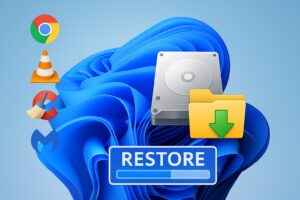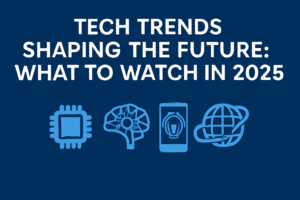1. The Dawn of Operating Systems – DOS Era
In the early 1980s, computers were far from the sleek, intuitive machines we know today. The Disk Operating System (DOS) was one of the first widely used operating systems, introduced by IBM and Microsoft.
Users interacted with DOS through command-line interfaces, typing precise instructions to execute tasks. There was no graphical interface—just a black screen and blinking cursor.
While primitive by modern standards, DOS laid the groundwork for file systems, memory management, and hardware control, which became fundamental elements in all later OS designs.
2. The Rise of Graphical User Interfaces (GUI)
As computers entered homes and offices, usability became crucial. The 1980s and 1990s marked a revolution with the introduction of Graphical User Interfaces.
- Apple’s macOS (1984) introduced intuitive windows, icons, and menus that changed how people interacted with computers.
- Microsoft Windows (1985) brought a similar concept to IBM-compatible PCs, making computers accessible to the masses.
This era shifted focus from typing commands to clicking and dragging, creating a more visual and interactive experience.
3. The Era of Networking and the Internet
By the mid-1990s, the internet reshaped everything. Operating systems adapted to include built-in networking support, web browsers, and security protocols.
- Windows 95 introduced the iconic Start Menu and native support for internet connections.
- Linux, an open-source project born in 1991, became popular among developers and enterprises for its flexibility and stability.
The concept of multi-user environments and remote connectivity became essential as businesses and individuals moved online.
4. Mobile Revolution and Cross-Platform Systems
The 2000s ushered in the mobile era. Smartphones and tablets required lightweight, touch-friendly operating systems.
- Apple’s iOS and Google’s Android redefined mobility, app ecosystems, and cloud synchronization.
- Traditional OS like Windows and macOS evolved to integrate with mobile devices, ensuring seamless transitions between platforms.
This period blurred the lines between desktop and mobile computing, pushing for unified user experiences.
5. The Modern OS: Smart, Cloud-Connected, and Secure
Today’s operating systems are far more than platforms to run applications—they are smart ecosystems connected to the cloud and powered by AI.
- Windows 11, macOS Sonoma, and ChromeOS offer deep cloud integration, advanced security, and personalization powered by machine learning.
- Linux continues to dominate servers and power the backbone of the internet, while Android leads the mobile world.
Modern OS design focuses on speed, automation, security, and cross-device continuity—ensuring you can start a task on one device and finish it on another.
6. What’s Next for Operating Systems?
The future points toward AI-driven automation, voice-controlled interfaces, and edge computing. Operating systems will become increasingly context-aware, adapting to users’ habits, devices, and environments.
As the boundaries between hardware and software blur, the next generation of OS may be completely cloud-based—fast, secure, and accessible from anywhere.
Final Thoughts
From the command lines of DOS to the intelligent, connected systems of today, operating systems have come a long way. They’re not just tools—they’re the foundation of modern digital life.
At SoftZone, we continue to explore how these systems evolve and shape the way we work, play, and connect.










Post Comment